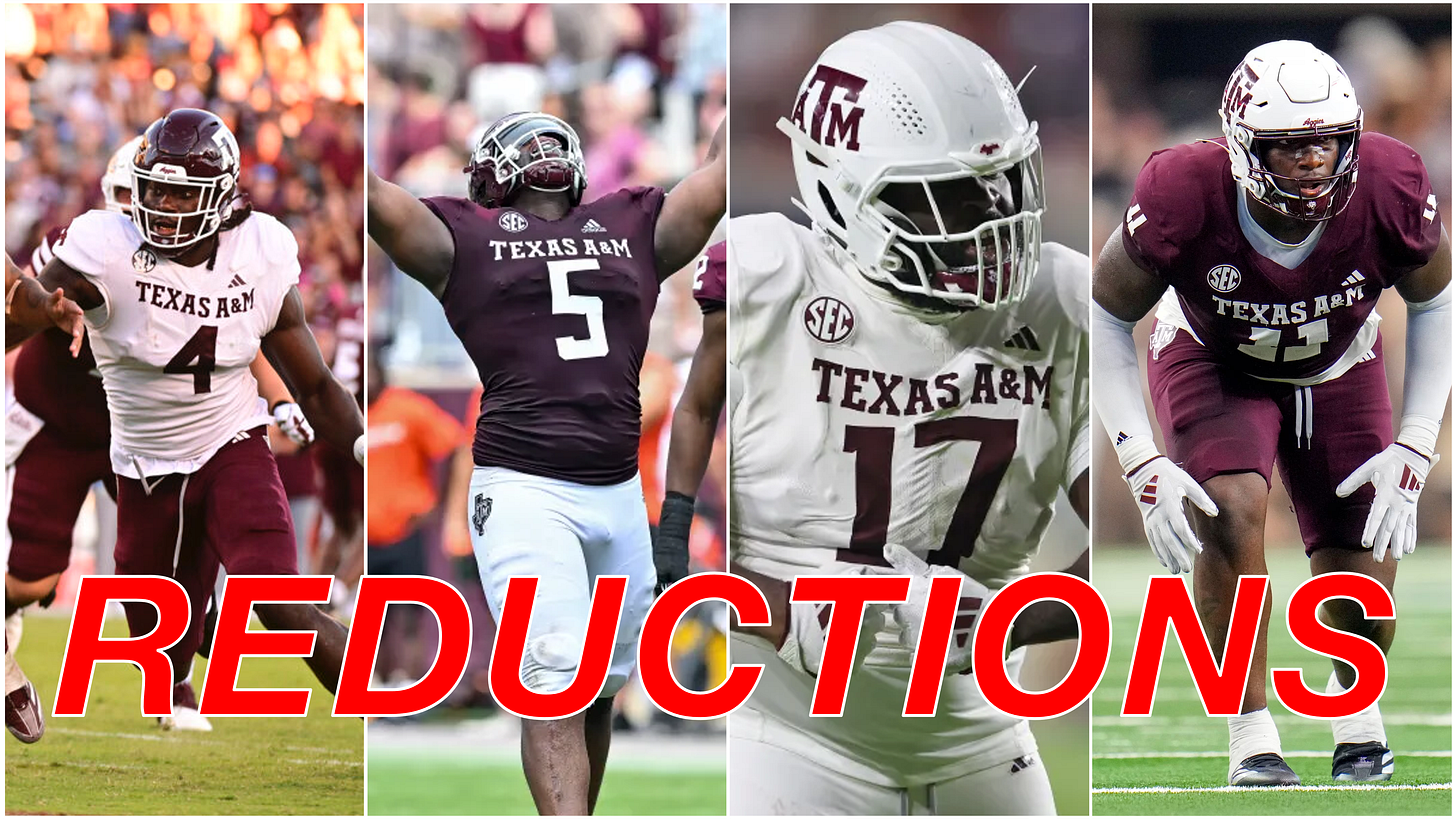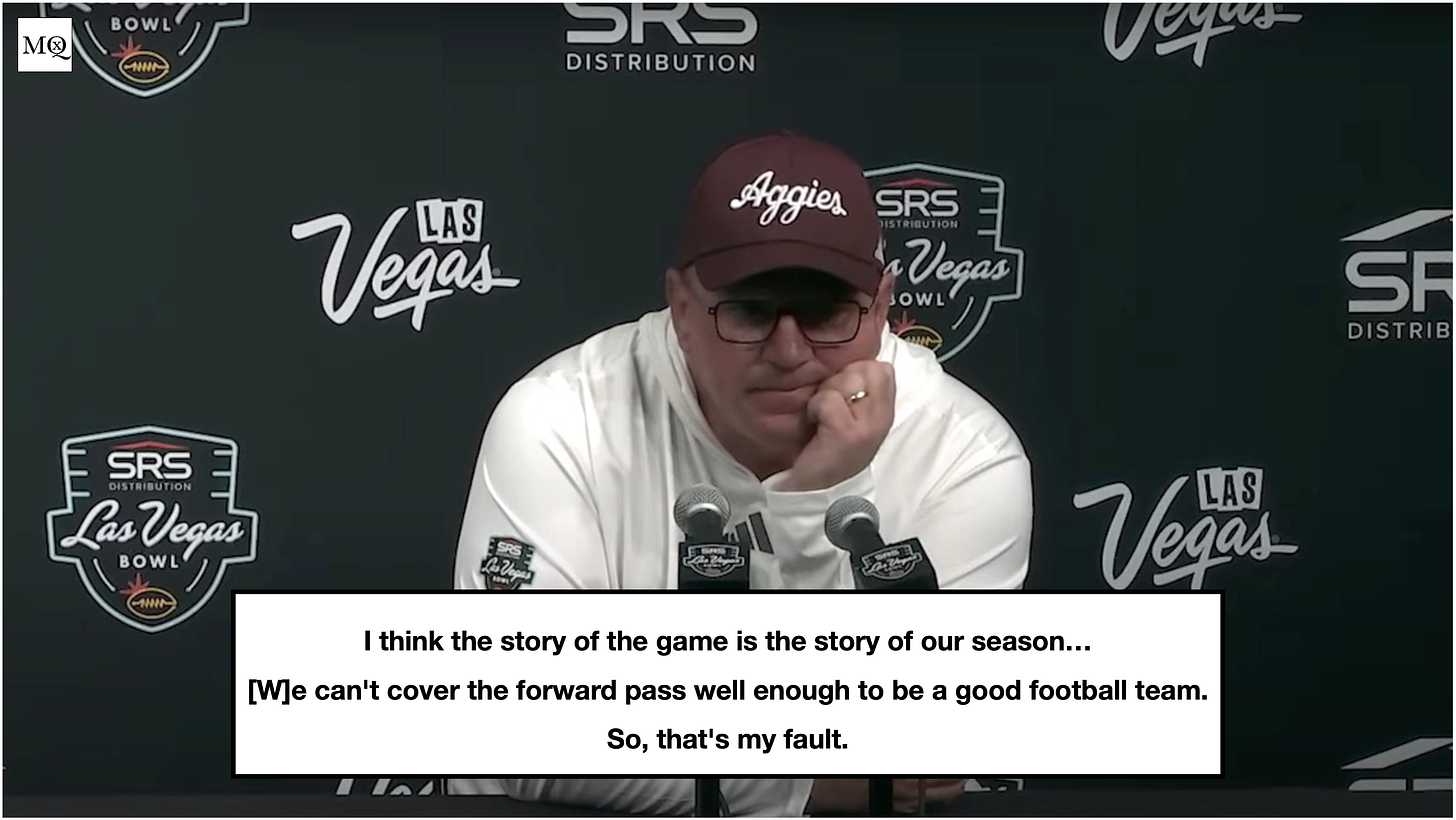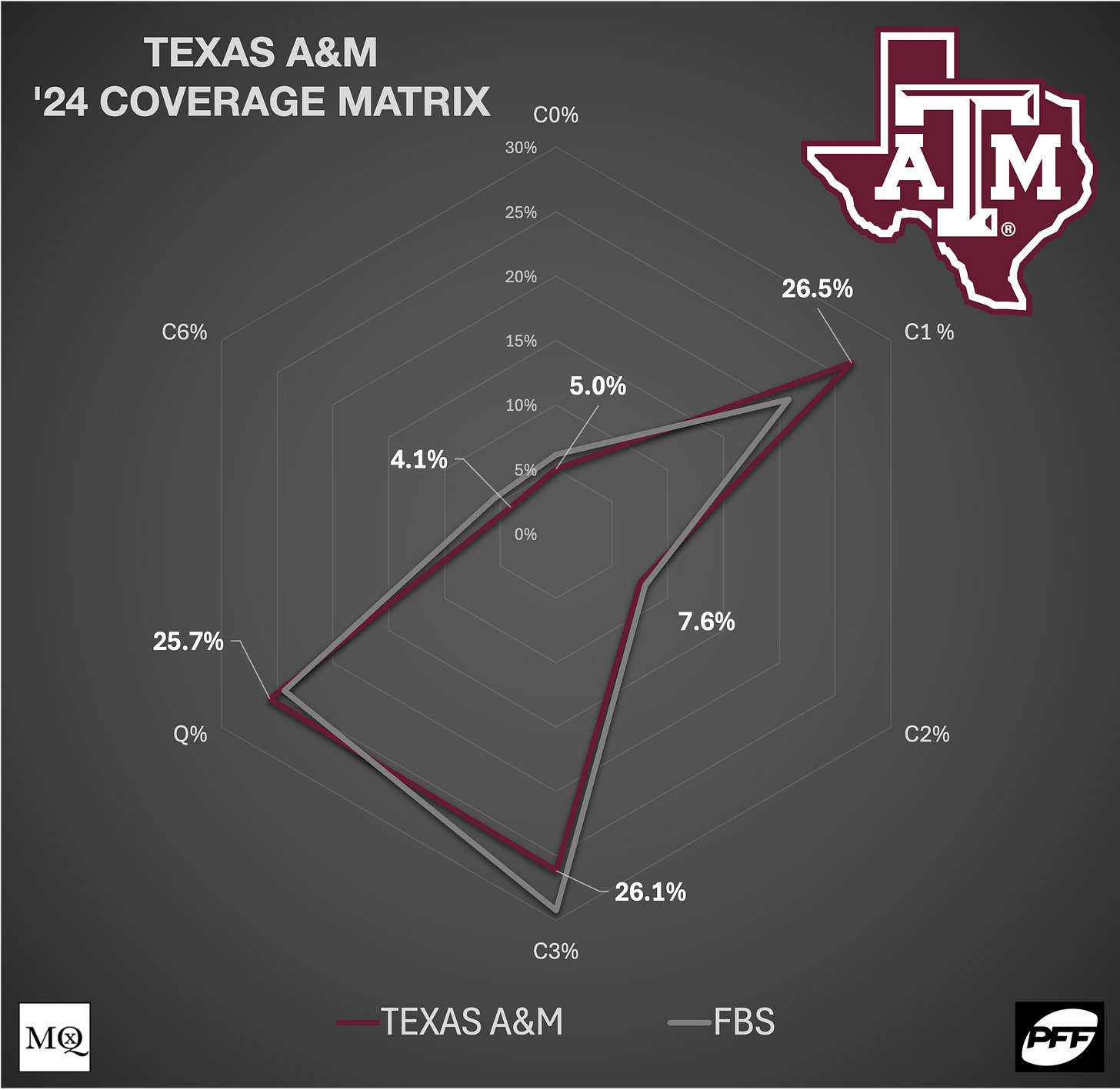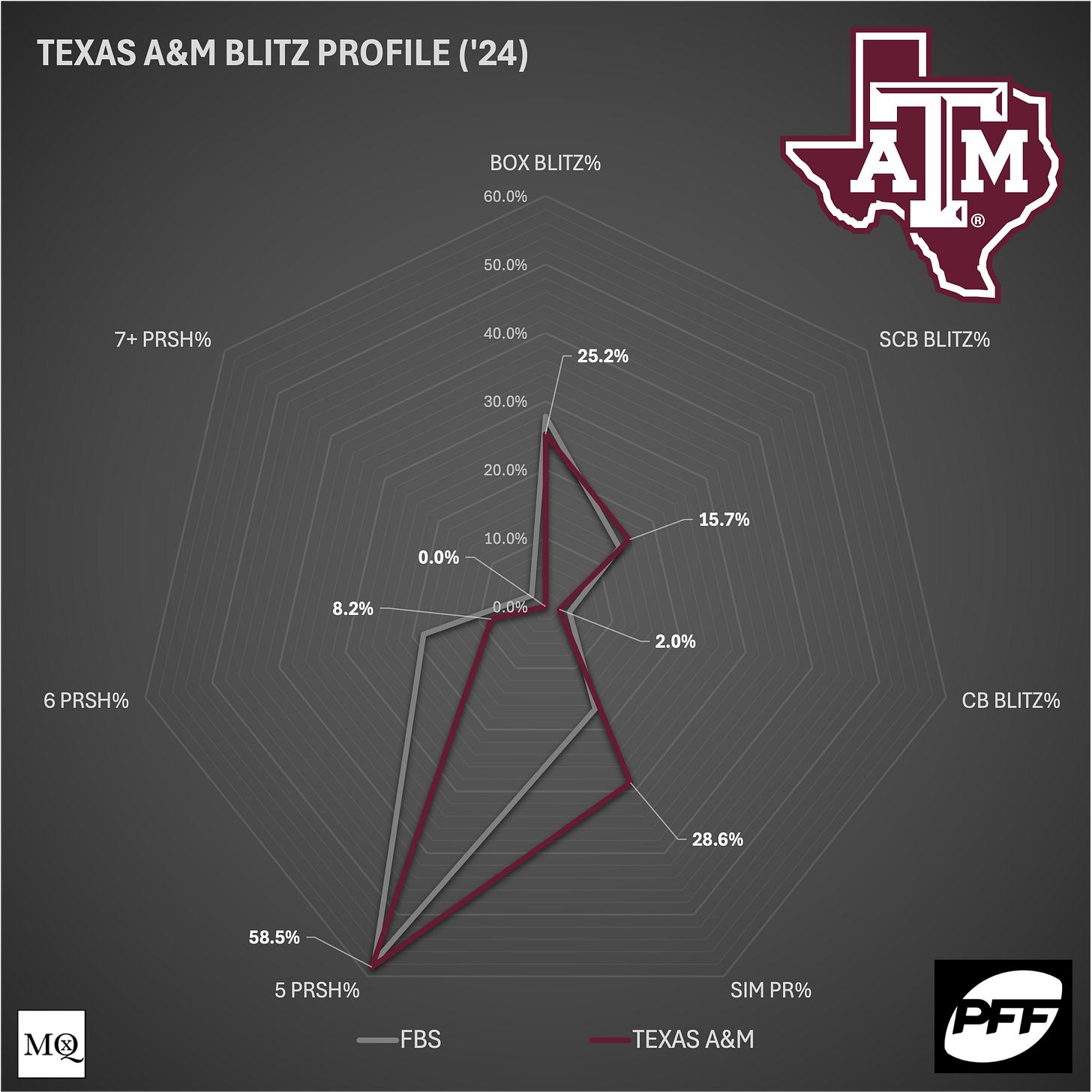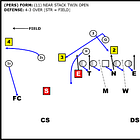Texas A&M's Reduction and Fluid Fronts
The secondary in College Station was a roller-coaster, but the front four was elite.
Mike Elko’s first year at Texas A&M was a bit of a roller coaster. The Week 1 loss to Notre Dame looks good in hindsight, but the level of play tended to wax and wane through the year.
Defensively, the Aggies’ secondary held the Irish passing game in check, but they gave up almost 200 yards on the ground. The offense sputtered to 246 total yards, 146 on the ground. It just wasn’t enough to beat the eventual National Championship runner-ups.
Then, the Aggies went on a tear, winning seven games in a row. Those wins were against SEC rivals Florida, Arkansas, Mizzou, Mississippi State, and LSU. The wins against Mizzou and LSU were the most impressive. Both teams were ranked in the top ten when the Aggies beat them.
But there were glaring issues in that stretch of games. The run defense was feast or famine. Florida, Mizzou, and LSU were all held to under 60 yards. Arkansas and Mississippi State had 100 or more yards rushing, with South Carolina going for 286. The passing defense played similarly.
The South Carolina game marked a complete 180 in the Aggies' fortunes. The 44-20 beatdown saw the Gamecocks go for well over 500 yards. The win streak was over, and issues hidden by the streak were suddenly brought to the forefront.
A&M got a reprieve in New Mexico State following the loss in Columbia, SC, but finished the season 8-4 after two close losses to Auburn (overtime) and hated rival Texas (17-7). The Aggies were paired with USC in their bowl game, which, again, saw the defense struggle against the pass.
After the Las Vegas Bowl, a dejected Mike Elko sat before the microphones. He credited USC with the victory, mentioned the seniors and their hard work, and then asked for questions. Before he got too far into his post-game presser, he made a direct statement about the season, uttering the phrase, ‘[We] can’t cover the forward pass…’
Elko went further, explaining that he first realized the secondary was ‘in trouble’ against Florida, in which Graham Mertz went 12/15 for 195 yards, one touchdown, and one interception. Then, the team ‘got lucky’ against Mizzou when Brady Cook went 13/30, struggling to complete passes but still going for 186 yards and one touchdown. Part of that luck came in the form of six sacks.
‘Luck’ was also mentioned in reference to the LSU victory. Tigers quarterback Garrett Nussmeier went 25/40 for 405 yards and two touchdowns but had three interceptions. For Elko, the Aggies’ luck ran out after the LSU game. One of the main concerns in Elko’s post-game presser was that he didn’t trust the secondary in zone coverage.
Elko’s statement tracks. Last year, the Aggies were 91st in zone usage (63.4%) in the FBS (PFF). The team's inability to play zone consistently is also a factor in the inconsistent play of the Texas A&M secondary. There were spectacular plays and amble interceptions when watching games, followed by huge chunk plays with wide receivers wide open deep downfield.
Looking at A&M’s coverage matrix, Elko essentially called the ‘average’ FBS defense in ‘24, with slightly more Cover 1 instead of Cover 3. The Aggies would finish in the top third in Cover 1 usage (34th) and ran the coverage almost exclusively behind their pressures (profile above).
Elko’s comments, framed with this knowledge, explain why the coverage was the Aggies’ favorite. Man simplifies the reads for the DBs. Zone, on the other hand, requires the secondary to understand each other's jobs and be able to widen their vision cone, seeing routes develop and matching them according to coverage.
Overall, the Aggies finished in the top 25 in BCFToys’ DFEI, an efficiency rating similar to FTN’s DVOA metric for the NFL. PFF ranked the Aggies 99th out of 134 teams in coverage but 24th against the run. Looking at opponent-adjusted EPAs, you get similar results. The Aggies were 23rd in EPA/play, 18th in EPA/rush, and 30th in EPA/pass. The latter illustrates the feast or famine frustration of the secondary.
The run defense was constant for much of the year. Some teams, such as Notre Dame, Auburn, Texas, and USC, were able to run the ball consistently, but the front seven wasn’t the issue for the most part. Elko’s ability to change the front structure and use of widespread ‘reductions’ fed into the athletic D-line in College Station.
Keep reading with a 7-day free trial
Subscribe to MatchQuarters by Cody Alexander to keep reading this post and get 7 days of free access to the full post archives.


